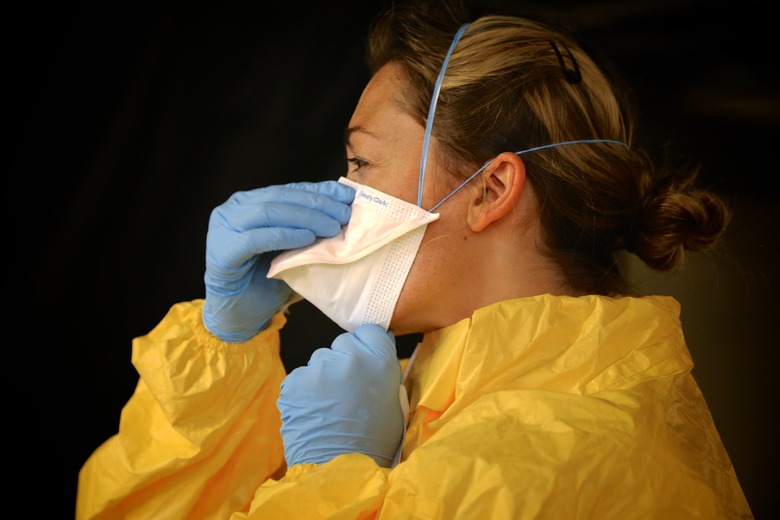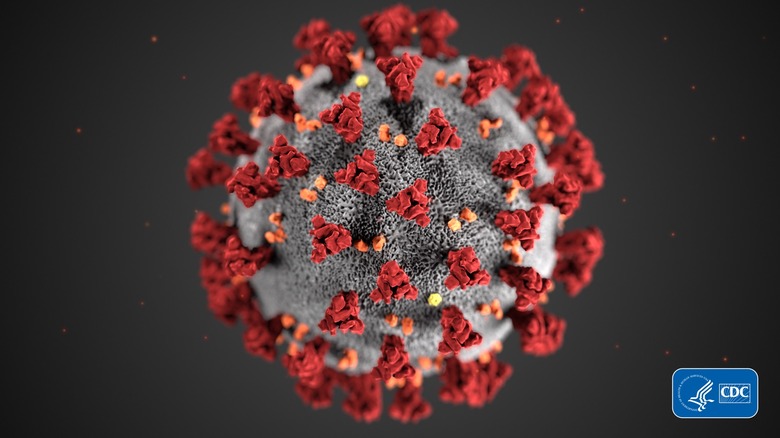Study Tracks Coronavirus Aerosol Spread - But There's Some Good News
A new study has identified how long COVID-19 can last on different types of surfaces, as well as how coronavirus aerosols might behave, as researchers explore how best to contain the spreading health crisis. While sensible hygiene precautions and social distancing remain the primary advice, figuring out how long coronavirus could be infectious across different routes of transmission is vital as numbers of cases rise – particularly as opinions on the effectiveness of N95 masks and other PPE vary.The study – federally funded, and carried out by a team from the National Institutes of Health, Princeton University, the University of California, Los Angeles, and the CDC – is a pre-print, and yet to be peer-reviewed. Its authors looked at plastic, steel, cardboard, and copper, but are still exploring how well COVID-19 survives in things like nasal secretions, and in varying environmental conditions.
As aerosols, the research found that COVID-19 remained viable throughout the three hour experiment. On plastic and stainless steel, viable virus – as in, capable of infecting someone – could be detected up to 72 hours after being applied. On copper, no viable virus could be detected after four hours; on cardboard, none could be detected after 24 hours.
Coronavirus aerosols aren't just coughs and sneezes
While it might seem like the study is suggesting that those carrying COVID-19 could infect rooms, cars, and other spaces for extended periods simply by coughing or sneezing, the reality isn't that clean-cut. Part of the issue is a misunderstanding of what is meant by "aerosols" in the first place.

Scientifically, there's a differences between "droplets" – which are larger than 5 microns – and "aerosols" – smaller than 5 microns – for respiratory secretions. The former are what's commonly associated with coughs and sneezes: the tiny droplets of liquid that carry the infection. Those can carry for up to 6-7 feet, setting-dependent. Aerosols, however, are much trickier to produce, but can be more infectious: they can spread more than 30 feet through the air.
In fact, according to Columbia virologist Dr. Angela Rasmussen – who did not take part in the study – COVID-19 doesn't normally form aerosols. "These are only generated under very specific circumstances during certain hospital procedures," she explains, such as bronchoscopy or intubation. That could actually mean these findings – which saw COVID-19 aerosols created using a nebulizer – hold some good news for ongoing coronavirus treatment.
For hospitals, a coronavirus countdown
"This data suggests that aerosolized virus half-life is measured in hours," Dr. Rasmussen suggests, "and aerosols generated by these medical procedures will not persist for days, for example in the hospital procedure rooms."
"Furthermore, both viruses also showed a 3-log decrease in infectious virus on stainless steel and plastic surfaces after 48-72 hours," she added. "This suggests that, while viruses can stay on some surfaces for days, their infectious titer is greatly reduced (1000-fold)."
COVID-19 lasts differently on different surfaces
Compared to SARS, COVID-19 usually lasts much the same length of time on surfaces like copper, stainless steel, and plastic. However this new novel coronavirus lasted significantly longer on cardboard, the study found. The half-life clocked in at 24 hours, versus 8 hours.

"Still, no virus was detected after 24 h, suggesting that HCoV-19 doesn't last more than a day on cardboard," Dr. Rasmussen points out. "People who are concerned about receiving packages should take note. People who handle packages/delivery people should take extra hand hygiene/protection precautions."
The suggestions for how to actually react to all this new data are fairly familiar. If you're in a situation where you might come into contact with medical aerosols, wearing the appropriate mask is a good idea. That, though, only really impacts people in healthcare settings.
For everyone else, focusing on regular hand-washing and avoiding touching your face remain the key strategies. Wiping down and disinfecting any surfaces regularly touched by multiple people – such as light switches, door handles, countertops, and remote controls – is also suggested. The US EPA has already published a list of cleaning products known to kill the COVID-19 virus.
If you're in a situation where you'll be in contact with cardboard boxes, such as handling packages, the advice is to wear gloves if possible. Obviously you should also avoid touching your face with those gloves, since coronavirus infection is primarily through the virus making contact with the eyes, mouth, and nose.
